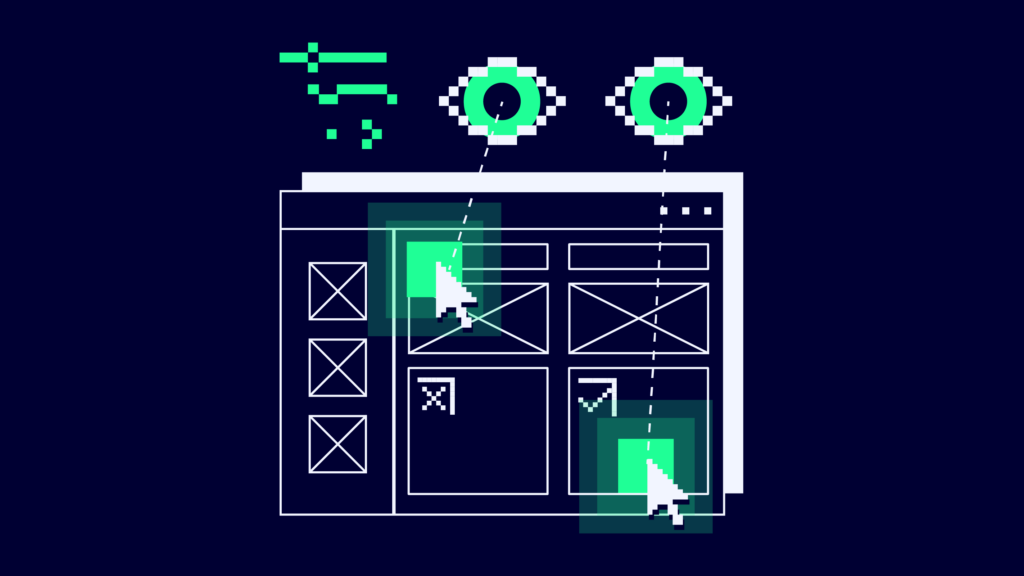If you’re wondering, “What is usability testing?”, allow me to explain:
Usability testing creates an environment in which software interfaces can be perfected before reaching the market. It’s a method that connects real users with your platform, app, or tool in order to surface issues and areas for improvement. In this article, I’m going to tell you more about the goals of usability testing, the types of usability testing, and how to conduct usability testing.
What Is Usability Testing?
Usability testing is a way to understand how well something works by testing it with real users in real-time. Generally speaking, end users from the target audience are asked to complete tasks while interacting with your software solution. Sometimes these testers are individuals, and other times usability testing is conducted within focus groups.
Example:
You’ve developed an app that helps people find dog walkers. You work with a usability testing platform (more on that later!) to connect you with real dog owners to join a few testing sessions. These dog owners log on to a virtual meet and attempt to choose a dog walker and book an appointment. Their navigation journey is monitored, and any usability problems are recorded. You can then use this data to improve your user interface before you launch.

What Is The Purpose Of Usability Testing?
The goal of usability testing is to assess the functionality of a software interface before it hits the market. This is achieved by watching the user experience in real-time. UX research is used to reach a number of different outcomes, including:
- Design process or development process iteration
- Determining the best place for CTAs using techniques like eye tracking
- Gaining a better understanding of user behavior
- Discovering any usability issues
- Testing an interface with different demographics
- Performing A/B testing to choose a version or layout
- Understanding how users navigate the interface
- Determining ease of use
- Check for application accessibility for users with disabilities
User testing results present you with invaluable qualitative data that can be used to make your software application easier to use and more enjoyable to engage with.
Types Of Usability Testing
There are two different types of usability testing: Remote/unmoderated testing, and moderated testing.
Moderated testing is conducted via video conferencing or in-person with the assistance of a facilitator. The facilitator watches how a number of participants interact with your interface.
Unmoderated testing is conducted without the assistance of a facilitator. Participants go through the test process remotely and then report on their experience via a questionnaire.
In both scenarios, it’s wise to develop your methodology ahead of time before beginning your testing. Determine the goal of the evaluation, your research methods, the metrics you’ll use to assess the test results, and how you’ll apply what you learn to increase user satisfaction.
Why Usability Testing Is Important
One of the biggest benefits of usability testing is the fact that testers are real users. These are the exact people who would purchase the software or app you’re developing. They understand what they’re looking for and how they’d like to achieve it, and can therefore offer invaluable insight into what may be missing or malfunctioning.
Listen: It takes a long time to create, build, and develop a software interface. During that time, internal teams spend countless hours working closely with the solution, and it becomes really easy to develop some myopia with respect to any gaps in fulfilling user needs. The testing process connects you with the third-party perspective of an outside set of eyes, allowing you to test your UX design in a completely unbiased fashion.
Improving user experience is the ultimate goal of usability testing. To achieve this, you'll need the right tools. Discover our curated selection of software testing solutions that can help.
How To Conduct Usability Testing
The easiest and most effective way to conduct usability testing is to work with a usability testing tool. Depending on the platform you choose, this partner can help you with:
- Recruiting test users and focus groups
- Designing the test process
- Acting as a facilitator for moderated testing
- Providing the technology for eye scanning, card sorting, and clickstream tracking
- Reporting and data visualization
- Creating questionnaires and surveys for remote usability testing
- And much more!
Working with a usability testing tool allows you to lean on the experts, delegate the testing process, and receive feedback on your product without overwhelming your team with added work.
How To Find The Best Usability Testing Tool For You
If you’re curious to learn more about usability testing tools, you’re in luck! We’ve carefully curated a list of the best and brightest on the market today. Read the article below to find the perfect tool for your team:
Best Usability Testing Tools for Real User Feedback
And to stay up to date on all the latest trends and insight on usability testing and software QA, don’t forget to subscribe to our newsletter.


